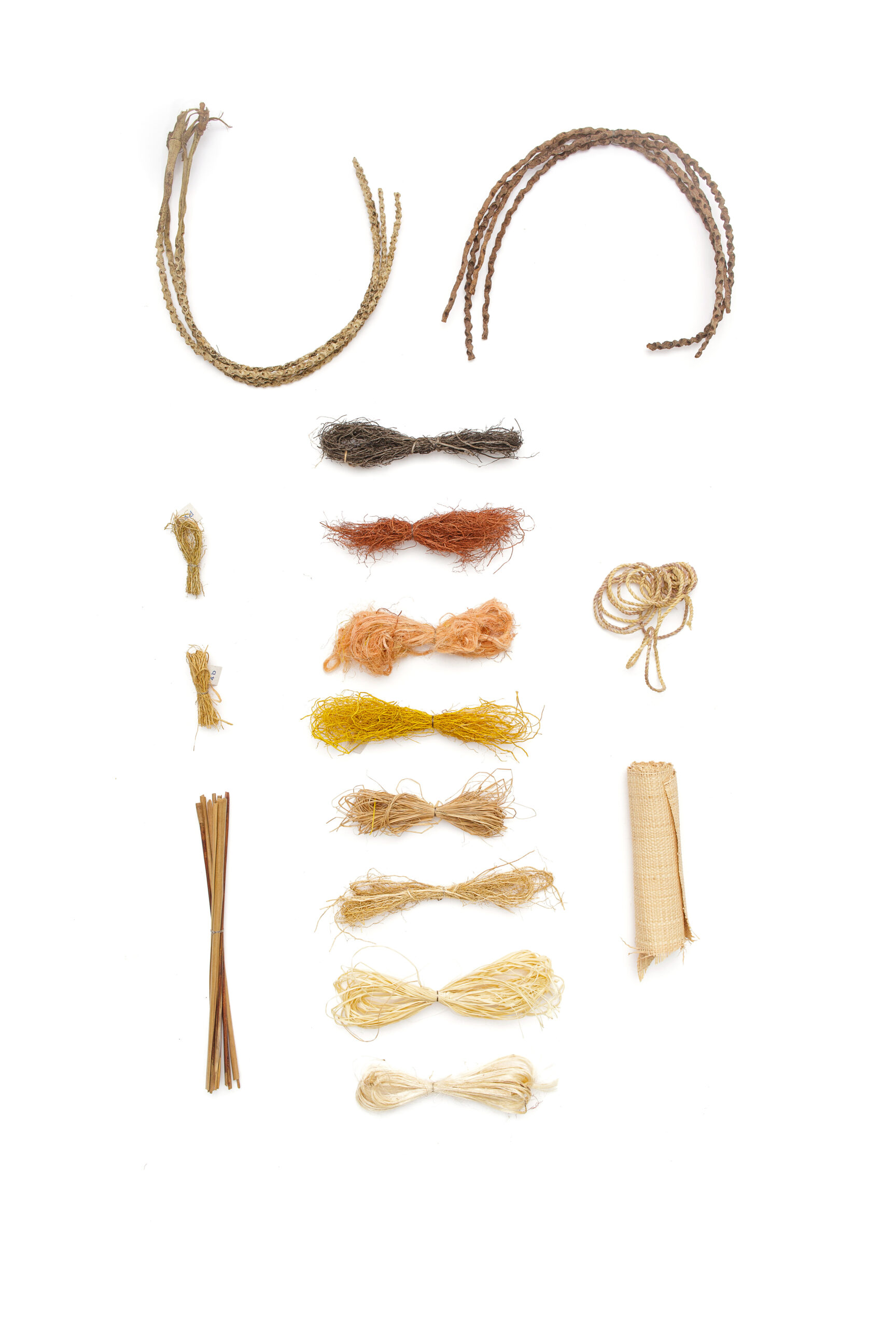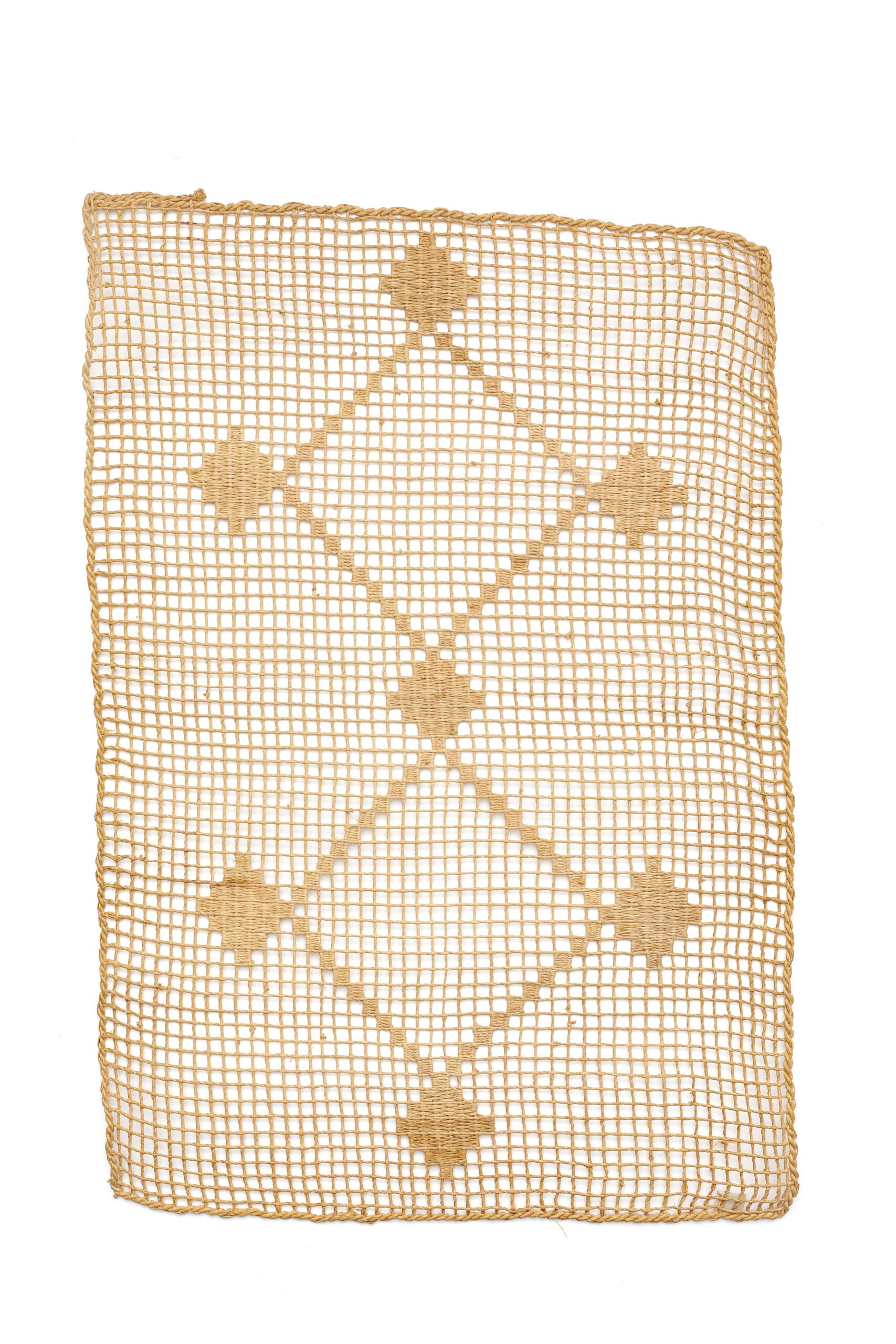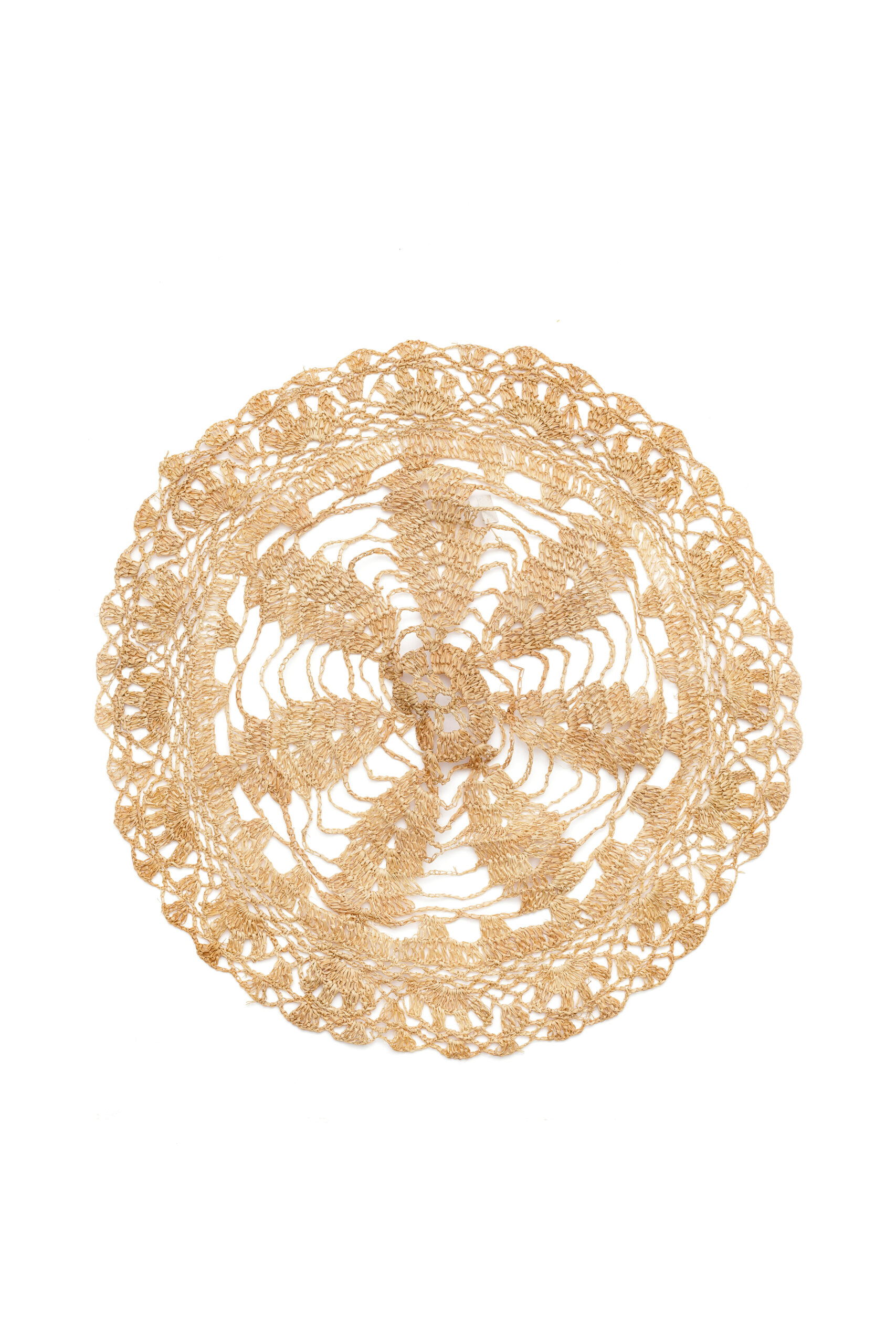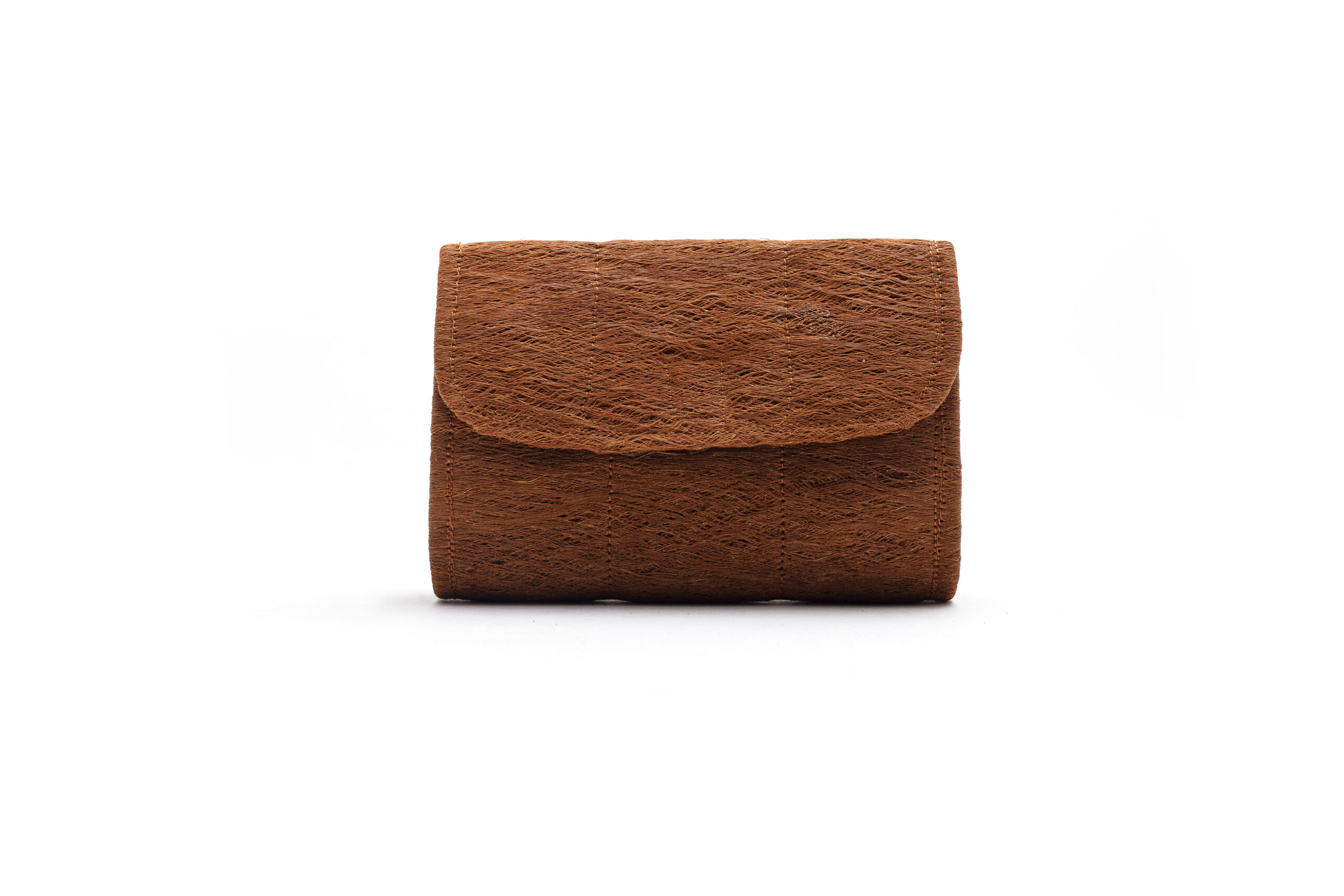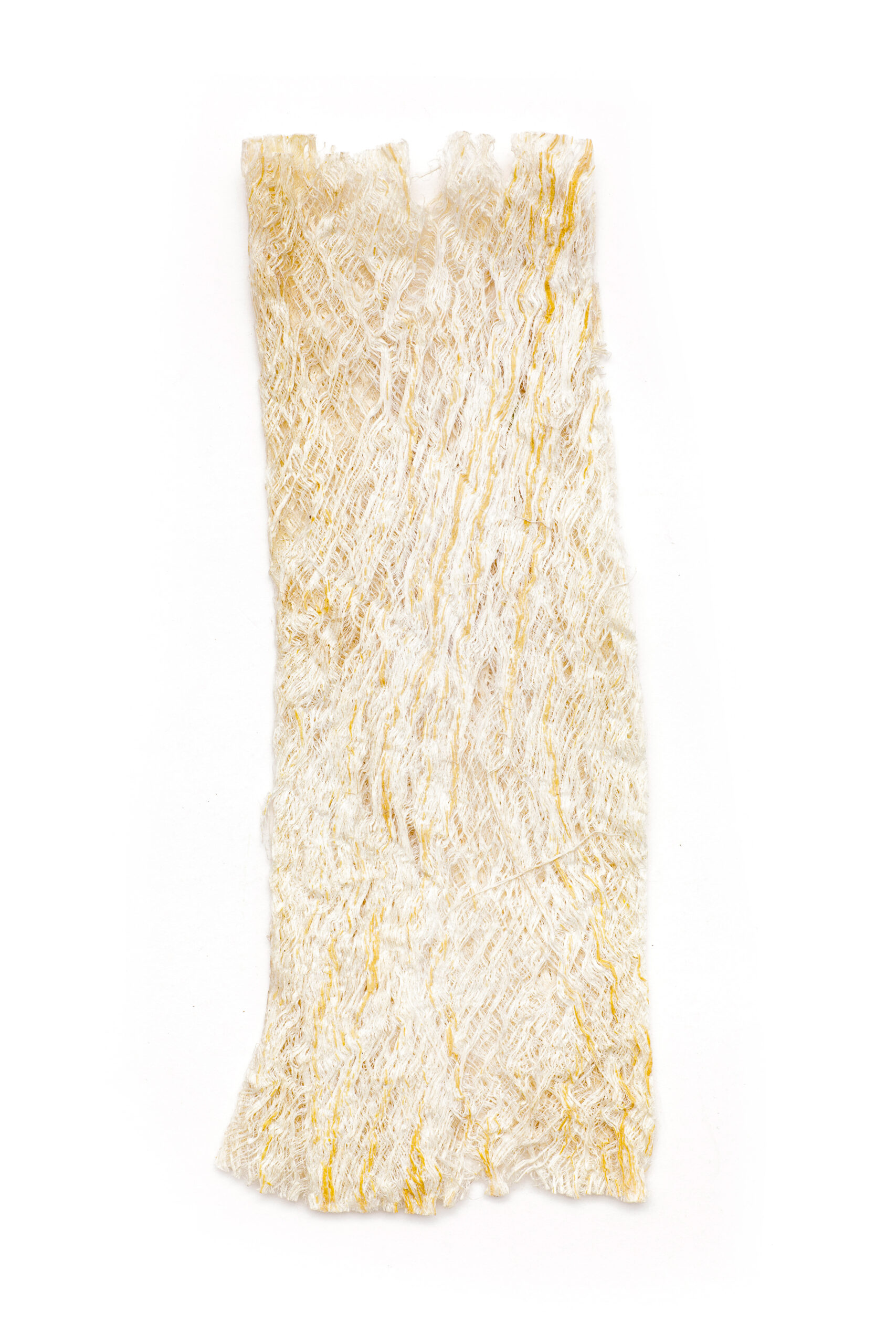MATERIALS: Mats generally use the splint of plants like Arumã or Buriti. Cloths can be made from materials such as Patchouli, Tururi, Buriti and Tucum straw, and many others.
TECHNIQUE: making threads, yarns or units with which it is possible to knit, crochet, sew, etc.
USE: It is common the use of mats as carpets, pannels and sun-blinds, as they can have large dimensions. Other cloths can be used in clothes, towels, curtains, etc.
Textiles
-
TEXTILES
These objects are made from different natural materials crafted into tissues and fabrics, with or without decorative patterns.
Mats or tupés are generally fabricated with the splint of plants like Arumã or Buriti, which can be dyed and waterproofed and then hand-woven. They can be produced in large dimensions and are commonly used as carpets, panels and sun-blinds.Cloths can be found in the Amazon made from local materials, such as Patchouli, Tururi, Buriti and Tucum straw, and many others. Their production generally consists of making threads, yarns or units with which it is possible to knit, crochet, sew, etc. The textiles are then used to make towels, curtains, hammocks and even garments.
Since they require direct work with the natural materials using ancestral techniques, and given the increasing availability of industrial fabrics and machines, some of these processes are not commonly encountered, and the knowledge of these processes is at risk of extinction.
-
-
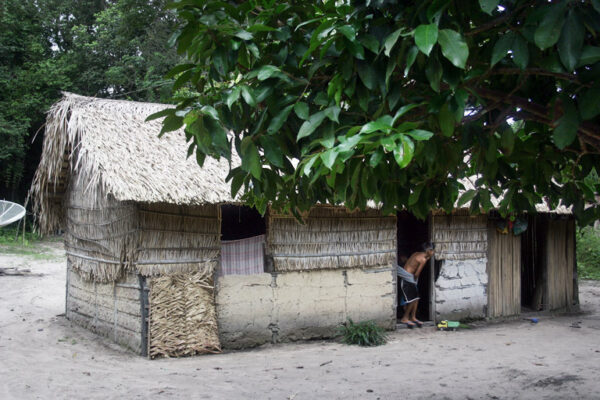
The use of mats as sunblinds is very suitable to the Amazonian region, since they are produced with natural materials that refrain light and heat.
-
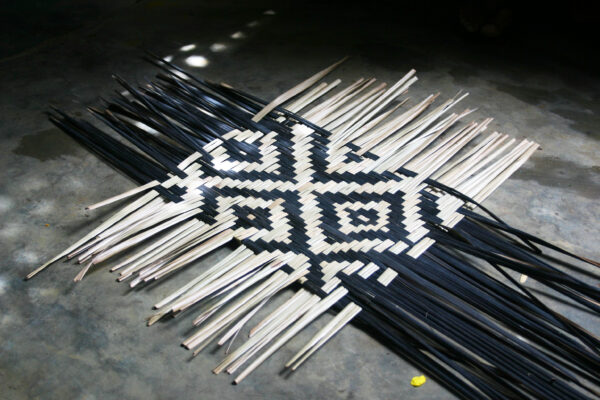
The drawings in the mats are an indigenous tradition and refer to nature and to local daily life, or even to the myths told by the elderly. They have names that can be translated as snake knitting, ounce mesh, pineapple skin, maçarico (bird) foot or spider web. The patterns are created in the weaving process, by mixing dyed and natural splints of Arumã.
-

The Arumã splints are the raw material for the mats.
-
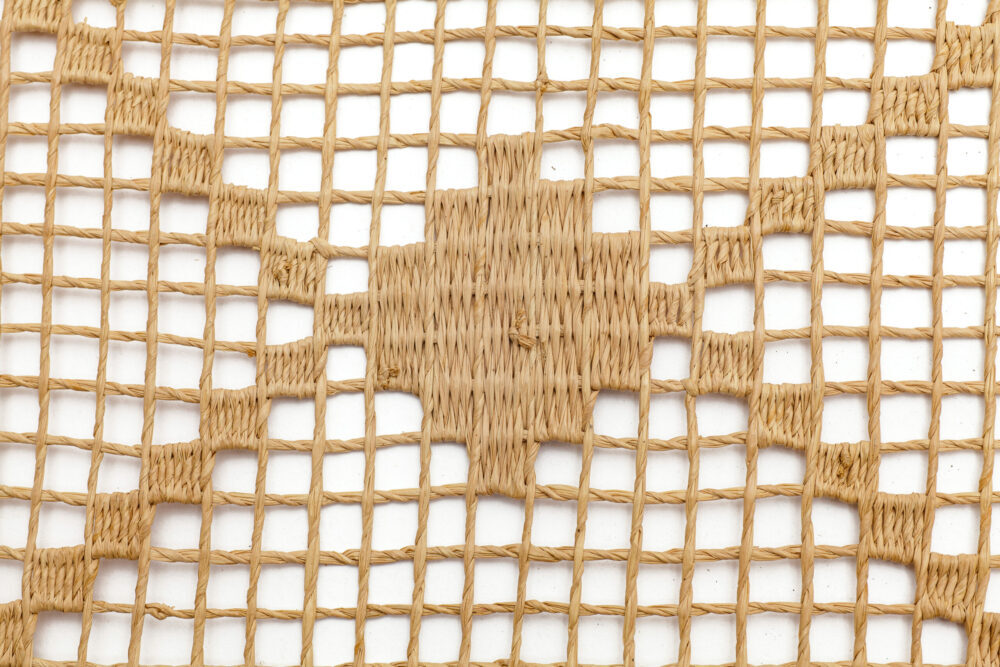
Table cloths by Dica Frazão, an Amazonian fashion designer who works only with local natural materials.
-

With the Tucum straw it is possible to crochet pieces in different styles.
-
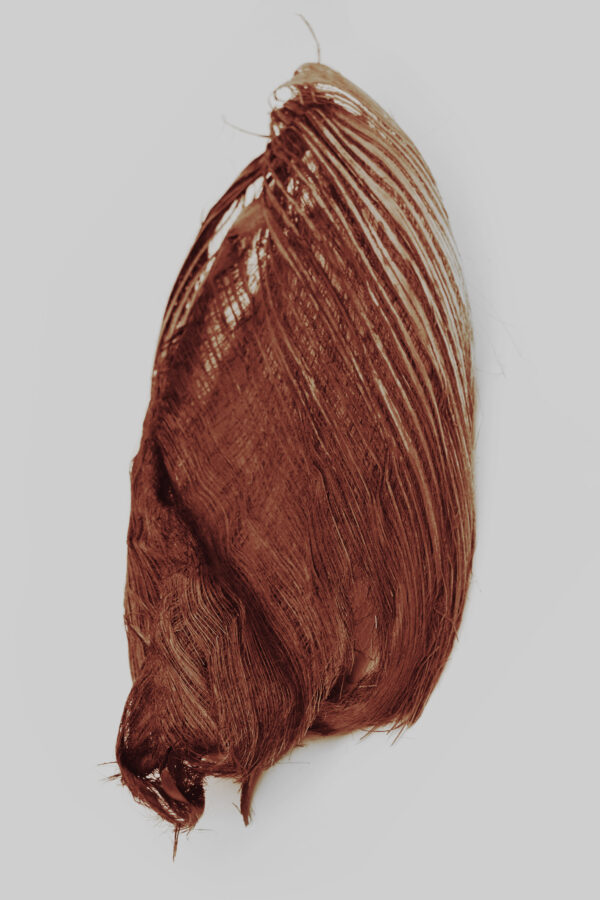
A tree that produces textiles: the Ubuçu palm tree, found in the Amazon, has its fruits protected by a fibrous, flexible and resistant enclosure named “tururi”. This dark brown material is a tissue ready to use, without first needing to make threads or to weave.
-
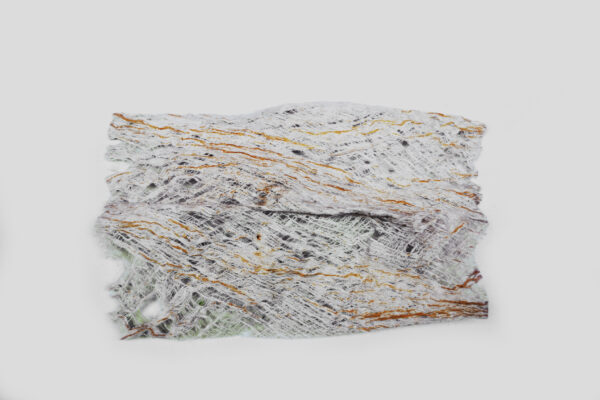
The tururi fiber simply washed. It can also be boiled and bleached for use.
-
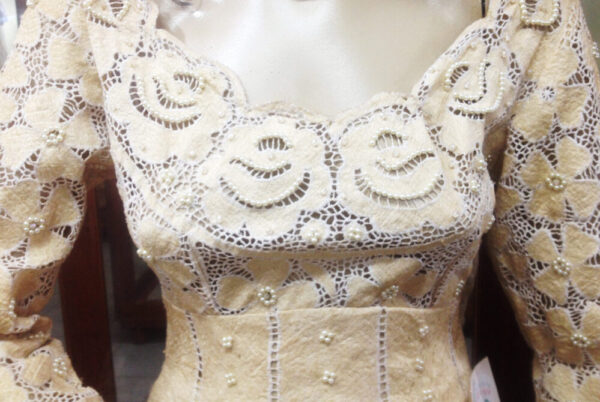
A detail of a dress by Dica Frazão made with Tururi (liber).
-
